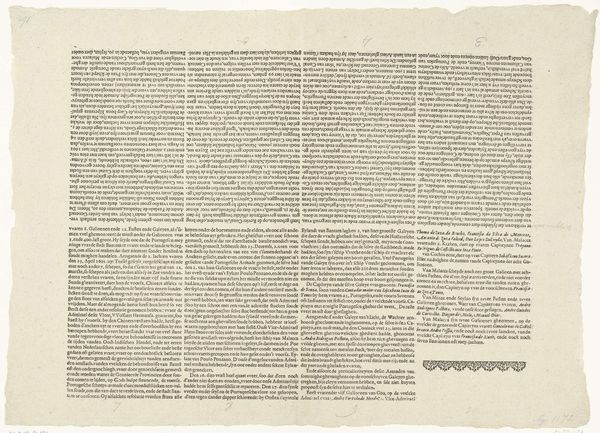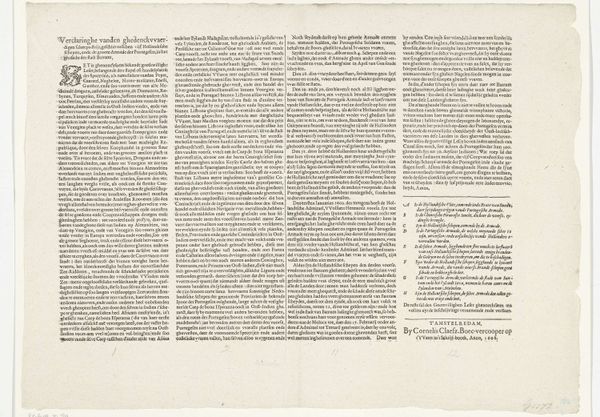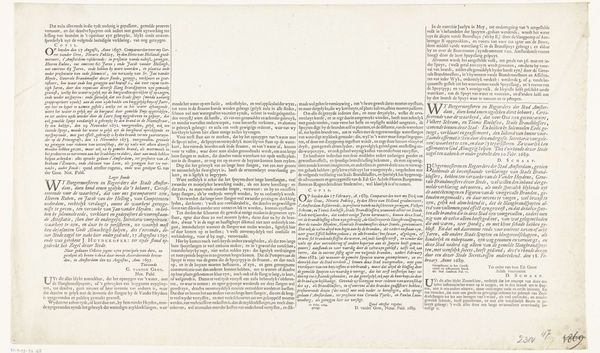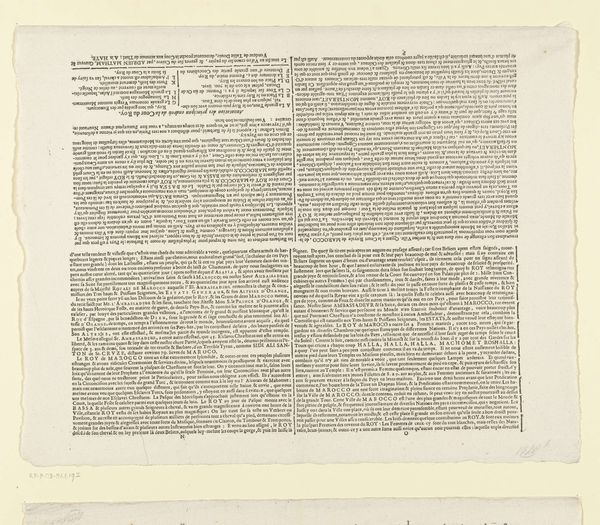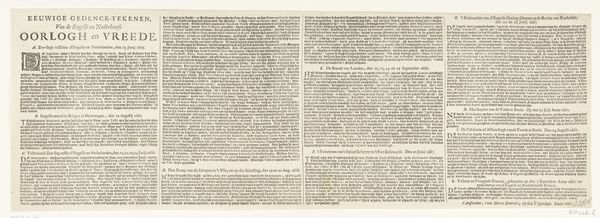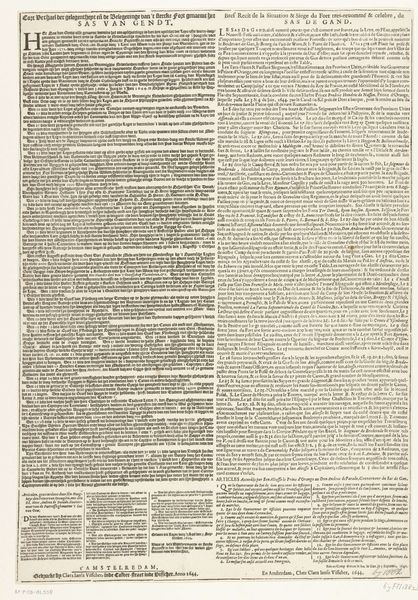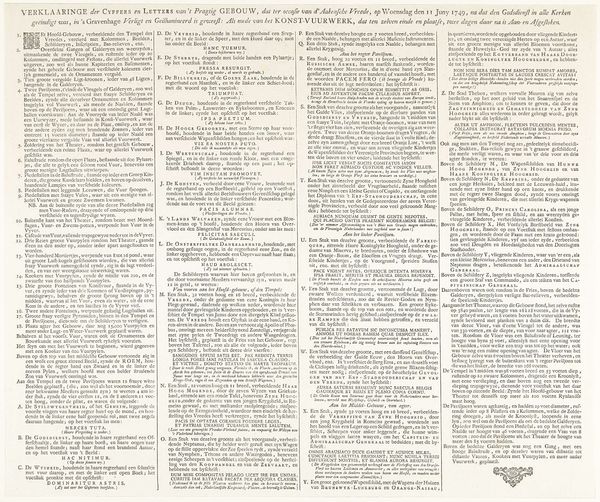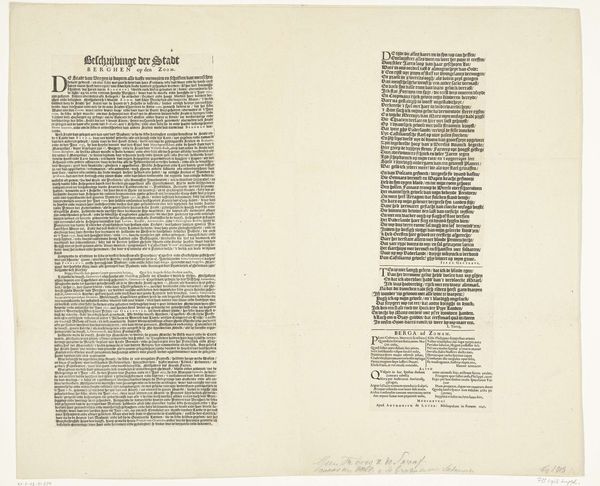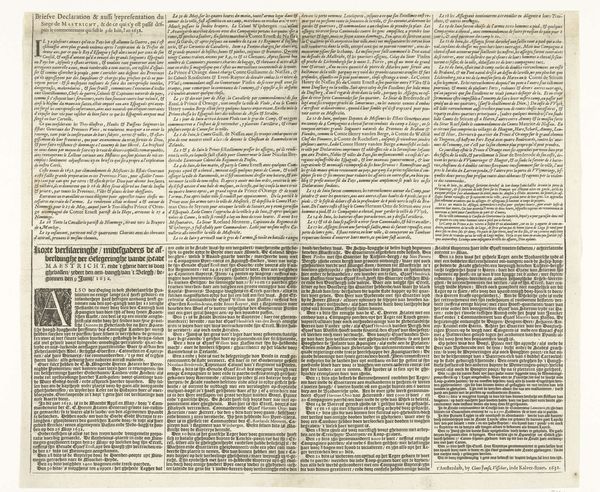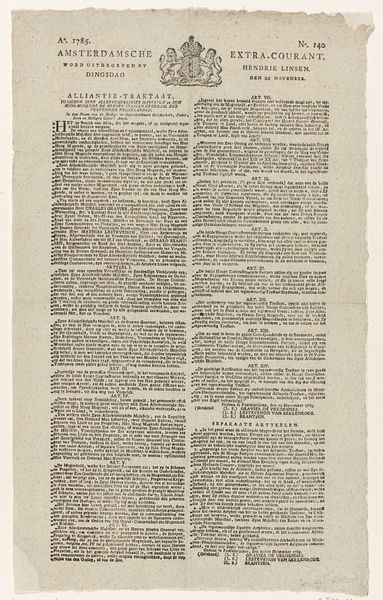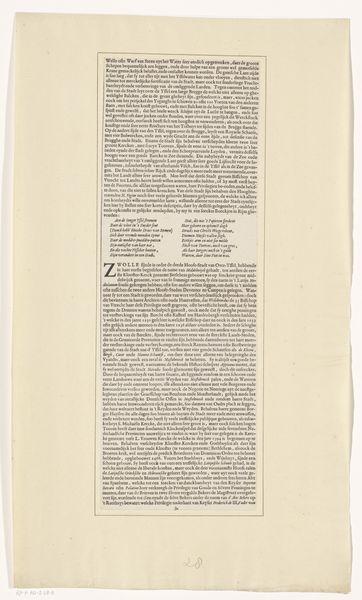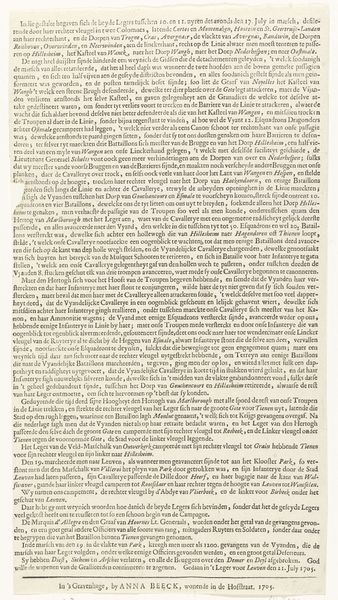
graphic-art, print, textile
#
script typeface
#
graphic-art
#
hand-lettering
# print
#
old engraving style
#
hand drawn type
#
hand lettering
#
textile
#
fading type
#
stylized text
#
thick font
#
handwritten font
#
small lettering
Dimensions: height 220 mm, width 340 mm
Copyright: Rijks Museum: Open Domain
Curator: Looking at this densely printed sheet, its layout reminds me of both a proclamation and a page from a hefty legal document. I see a stark presentation of text, with closely packed lettering, hinting at a weighty message within. Editor: Precisely. What you're observing is a document held at the Rijksmuseum, "Tekstblad bij het ensemble van het beleg van Hulst, 1645," created anonymously. The year, 1645, signals its creation amidst the political and military maelstrom of the Eighty Years' War. This isn’t just any text; it's a printed artifact directly linked to the siege of Hulst. Curator: Its historical significance then becomes almost palpable. Examining the Dutch Golden Age through a lens focused on war, power, and early forms of propaganda offers invaluable insight. This could serve as an exceptional teaching tool regarding early information dissemination. Editor: Indeed, the materiality is central. This graphic art, this print—most likely an engraving—would have been produced through labor-intensive methods. The act of printing itself, the accessibility it offered compared to handwritten documents, revolutionized communication. Think of the artisans involved, the social networks needed to distribute it. Curator: Considering this artifact through a post-colonial, intersectional framework demands deeper investigation into whose voices were amplified versus silenced in these narratives. Whose accounts dominate the text? What perspectives were deliberately excluded in chronicling the events? Editor: The text would've likely been commissioned by a political body and printed on textile for ease of dissemination. By exploring the socioeconomic strata, we can explore power dynamics and the material impact the war had on various demographics of people in the Netherlands. It underscores class struggle. Curator: What resonates most deeply is realizing how similar anxieties over sovereignty and societal order, present then, echo into our contemporary political and cultural battles. Even typography possesses agency as evidence that some stories and people get louder and longer platforms. Editor: I’m left contemplating the weight and value of printed media at that time and reflecting on what is made disposable or deemed unworthy of historical attention today.
Comments
No comments
Be the first to comment and join the conversation on the ultimate creative platform.
